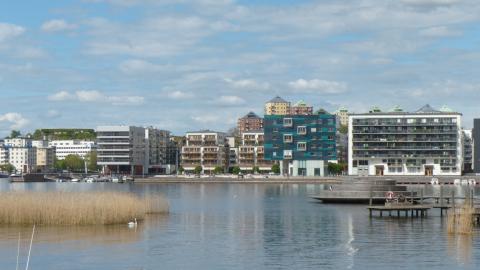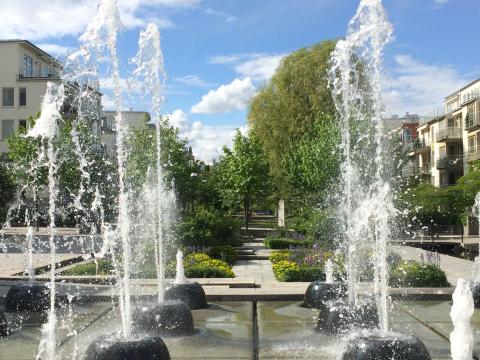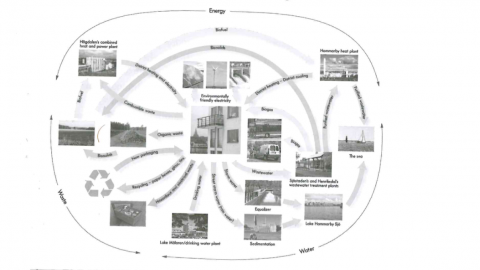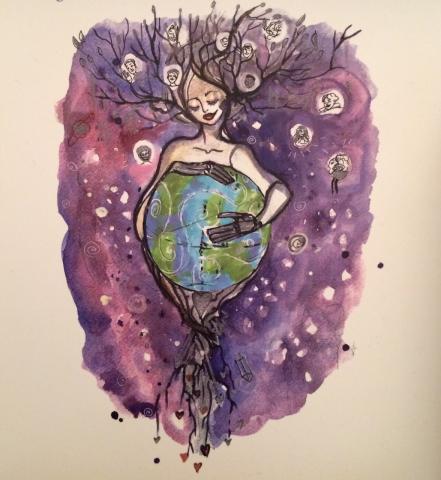Hej Geographists! (That means Hello Geographists... I guess you had to be there).
The Stockholm orientation team: Chip, Nina, Ginny and Mitch.
After a ridiculously early morning we arrived from Reykjavik in Stockholm where we had a smooth transition from air to rail; specifically the Arlanda express, the 'most eco-friendly- way to travel from Arlanda Airport to Stockholm City Center. It was clearly a more luxurious and sustainable way to travel. It offered high-speed wi-fi, cupholders and comfortable seating, which Todd Littman says is the future of travel. What was the first thing we noticed? TREES, so many trees, and recycling too, I guess. The trees were a nice surprise after the barren landscape of Iceland left from the Vikings. After a 20-minute ride at a speed of up to 200 km/hr we got to the city center, where we walked our tired bodies and groggy minds to our hostel, which turned out to on a REALLY NEAT RESTORED SAILBOAT on Skeppsholmen Island, one of the 14 islands which make up the city.

After an extremely eloquent and informative orientation by the Stockholm group, we had a nice break and afternoon off to explore the many wonders the city has to offer. First impressions of the city were definitely not lacking, from the people to the buildings and the connectivity of the transportation system we were simply hooked! That was just the beginning. An afternoon spent at the world-renowned eco-urban development of Hammarby Sjostad, which was built on an old brownfield site, proved to be not only super educational, but also gave us the opportunity to use a critical lens to assess the barriers that master-planned communities can encounter. Challenges we noticed within the community involved high housing prices that can lead to a segregation of classes, and an almost artificial atmosphere that lacks the ability for personalization.


These critiques are offset by many cool sustainability features that we were very impressed by:
- Underground Vacuums which transport organics, household waste, and recyclables
- Closed loop systems which turn waste into energy
- Eco-ducts: a user friendly way to avoid busy intersections, crosswalks and transit systems
- Connectivity via multiple transportation options: biking, walking, biofuel buses, trams, trains, and a ferry
- Green space
- Permeable streetscapes
Further, some of the group (if they felt the need) got the chance to participate in making some biogas! Cool!

A full overview of the Hammarby Sjostad Model is given below.

Check yah tomorrow!


